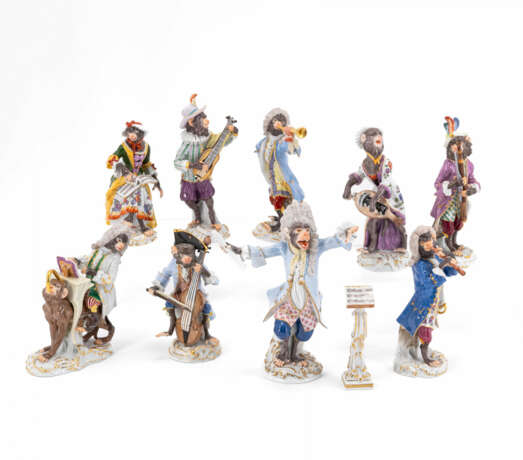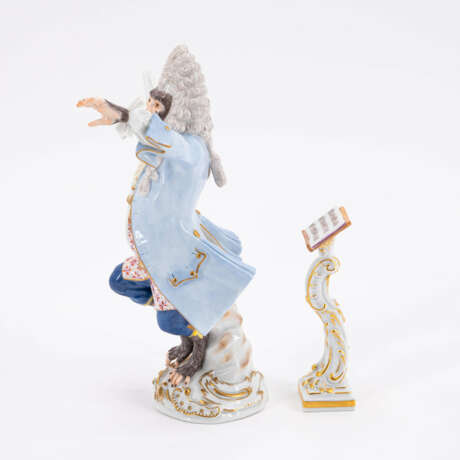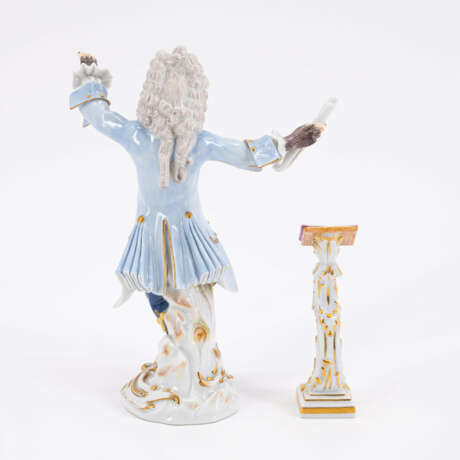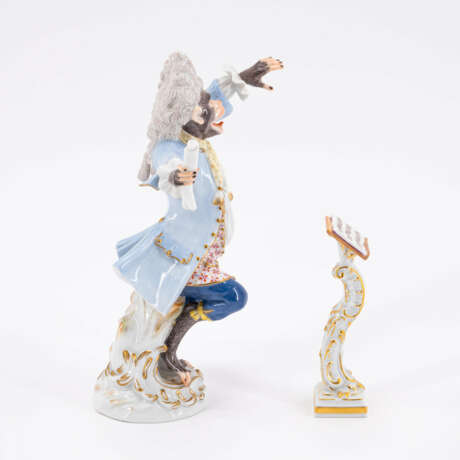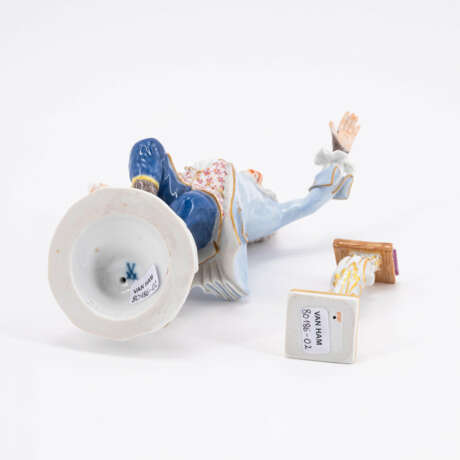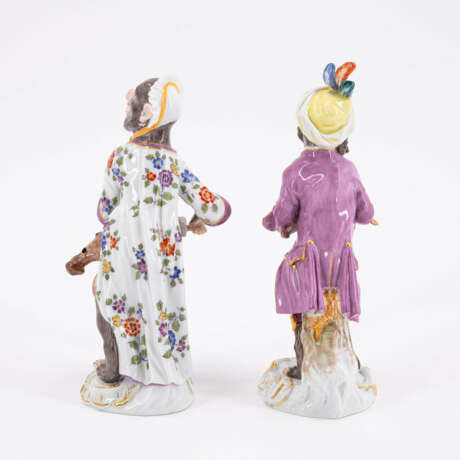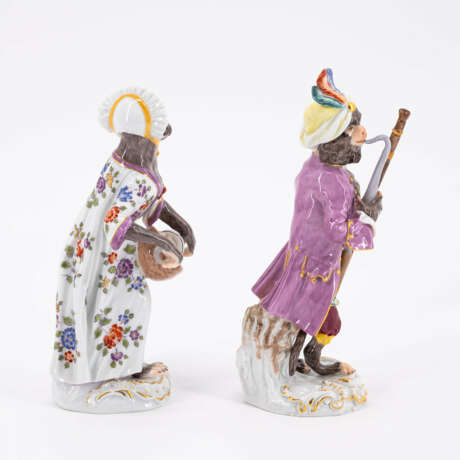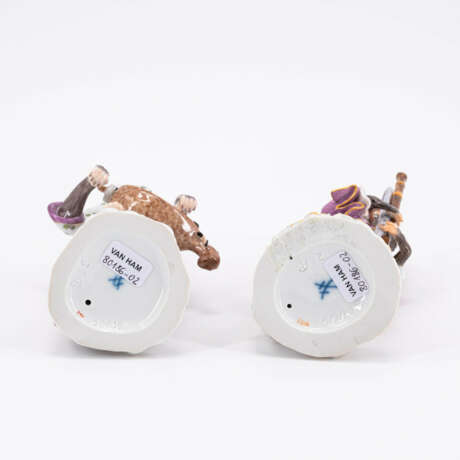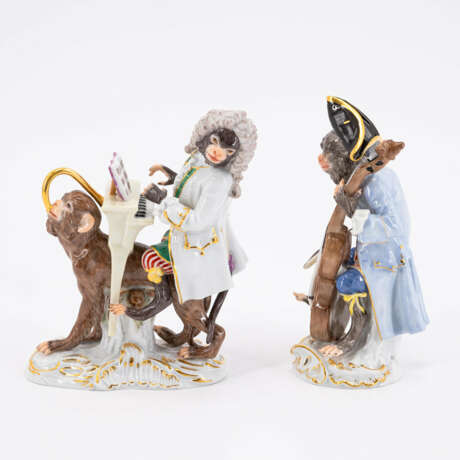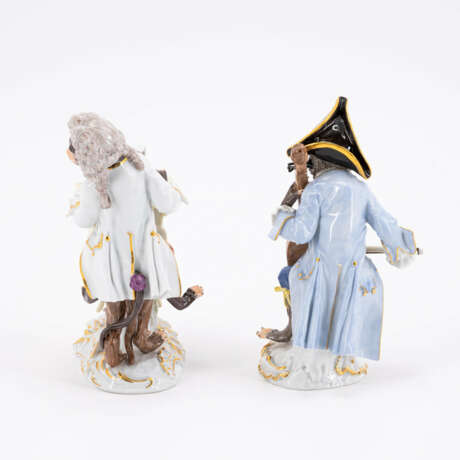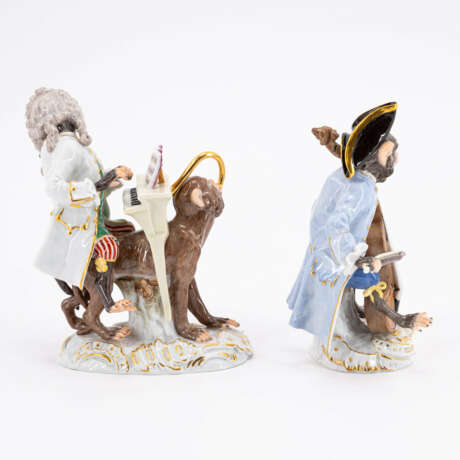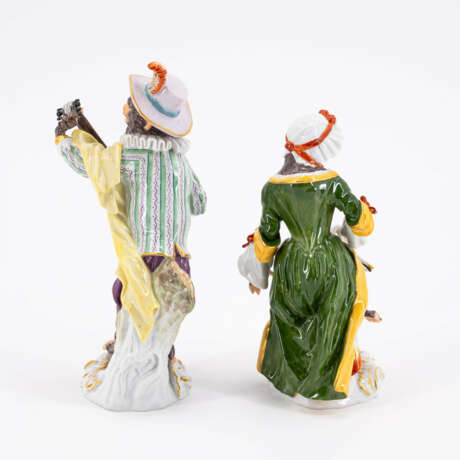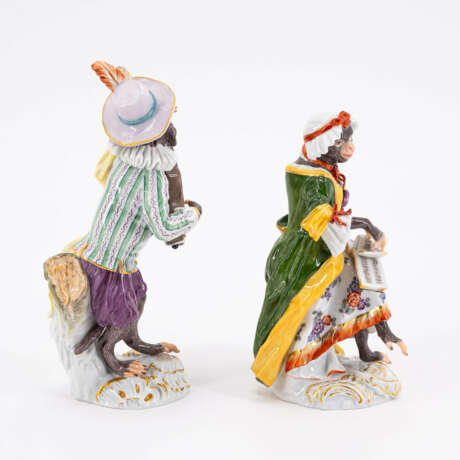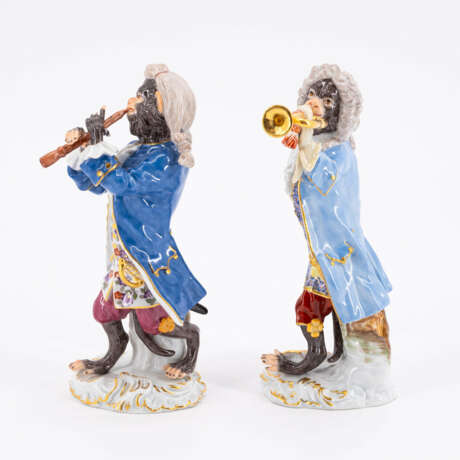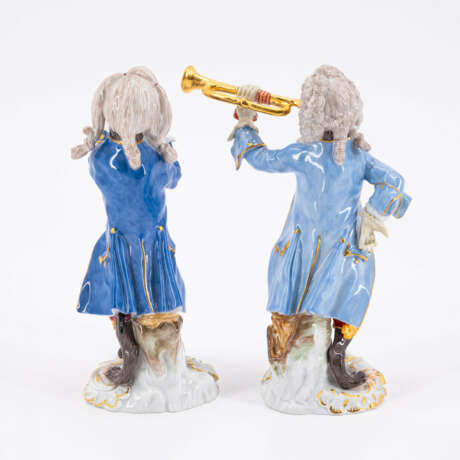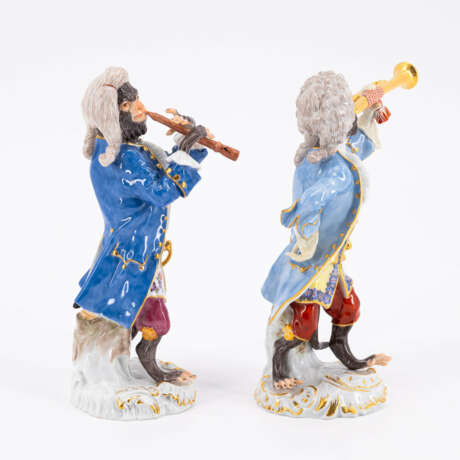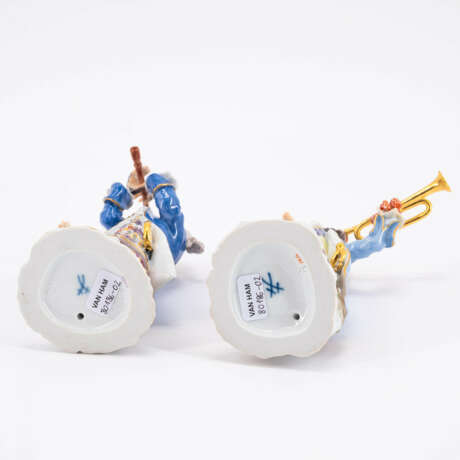ID 1318132
Lot 344 | Meissen. NINE PORCELAIN FIGURINES AND A MUSIC STAND FROM THE "AFFENKAPELLE" ("APE CHAPEL")
Estimate value
€ 1 000 – 1 500
Meissen.
Maker/Designer: Model J. J. Kaendler.
Technique: Porcelain, enriched in colours.
Description: Overall nine figurines, consisting of:
Conductor, hurdy-gurdy player, flautist, guitar player, ape at the piano, ape with trumpet, cellist, bassoon player and a singer. Plus a music stand.
Measurement: Height 9,5-17,5cm.
Mark: Sowrds mark, painted blue under the glaze. Various former's and painter's numbers. Different year's marks.
Literature:
- Adams, Len and Yvonne: Meissen Portrait Figures, Leicester 1992, p.188 and 195.
- Rückert, Rainer: Meissener Porzellan von 1710-1810. Cat. no.1064-1078.
- VEB Staatliche Porzellanmanufaktur Meissen (ed.): Figures 1. Cf. chapter "Affenmusiker"
The exact date of origin of the so-called 'Ape Chapel' cannot be proven. Based on the mould number, it can be assumed that Madame de Pompadour purchased 19 figures of this type around 1753. The figures were probably created by Johann Joachim Kaendler and reworked with the help of Peter Reinicke in 1765/66. In the mid-18th century, depictions of monkeys that parodistically take on human features enjoyed great popularity. This genre of the so-called 'Singerien' (French 'singe' = monkey) was not only realised in porcelain, but can also be found in ceiling and wall paintings or on tapestries. It is assumed that Christophe Hüet's wall paintings in the so-called Ape Cabinet at Chantilly Castle served as a model for the Meissen Monkey Chapel. Another French model could be a ape chapel from the Mennecy manufactory from the 1940s.
| Address of auction |
VAN HAM Kunstauktionen GmbH Hitzelerstr. 2 50968 Köln Germany | ||||||||||||||
|---|---|---|---|---|---|---|---|---|---|---|---|---|---|---|---|
| Preview |
| ||||||||||||||
| Phone | +49 221 92586215 | ||||||||||||||
| Fax | +49 221 92 58 62 4 | ||||||||||||||
| Buyer Premium | 32% | ||||||||||||||
| Conditions of purchase | Conditions of purchase | ||||||||||||||
| Business hours | Business hours
|
